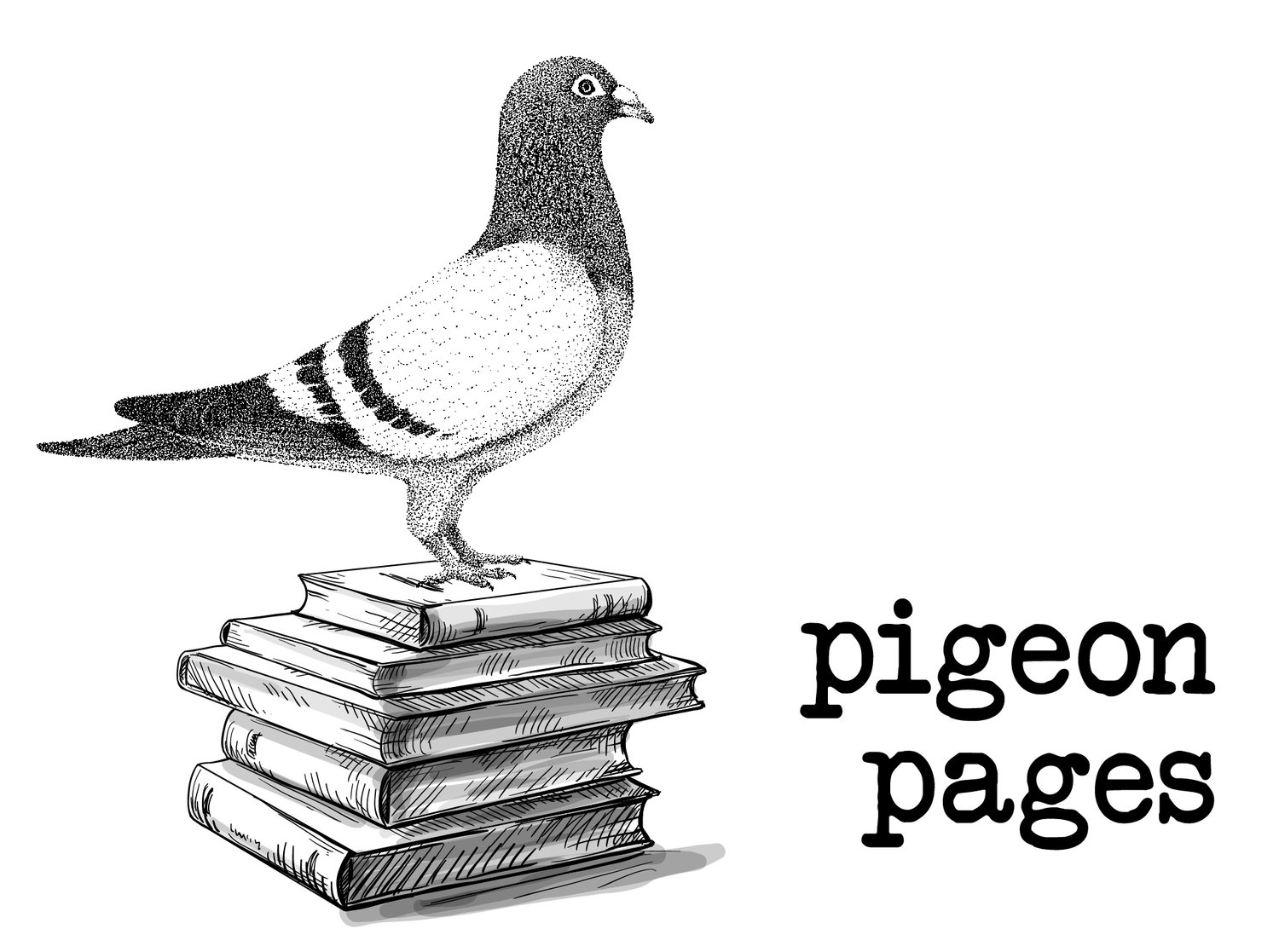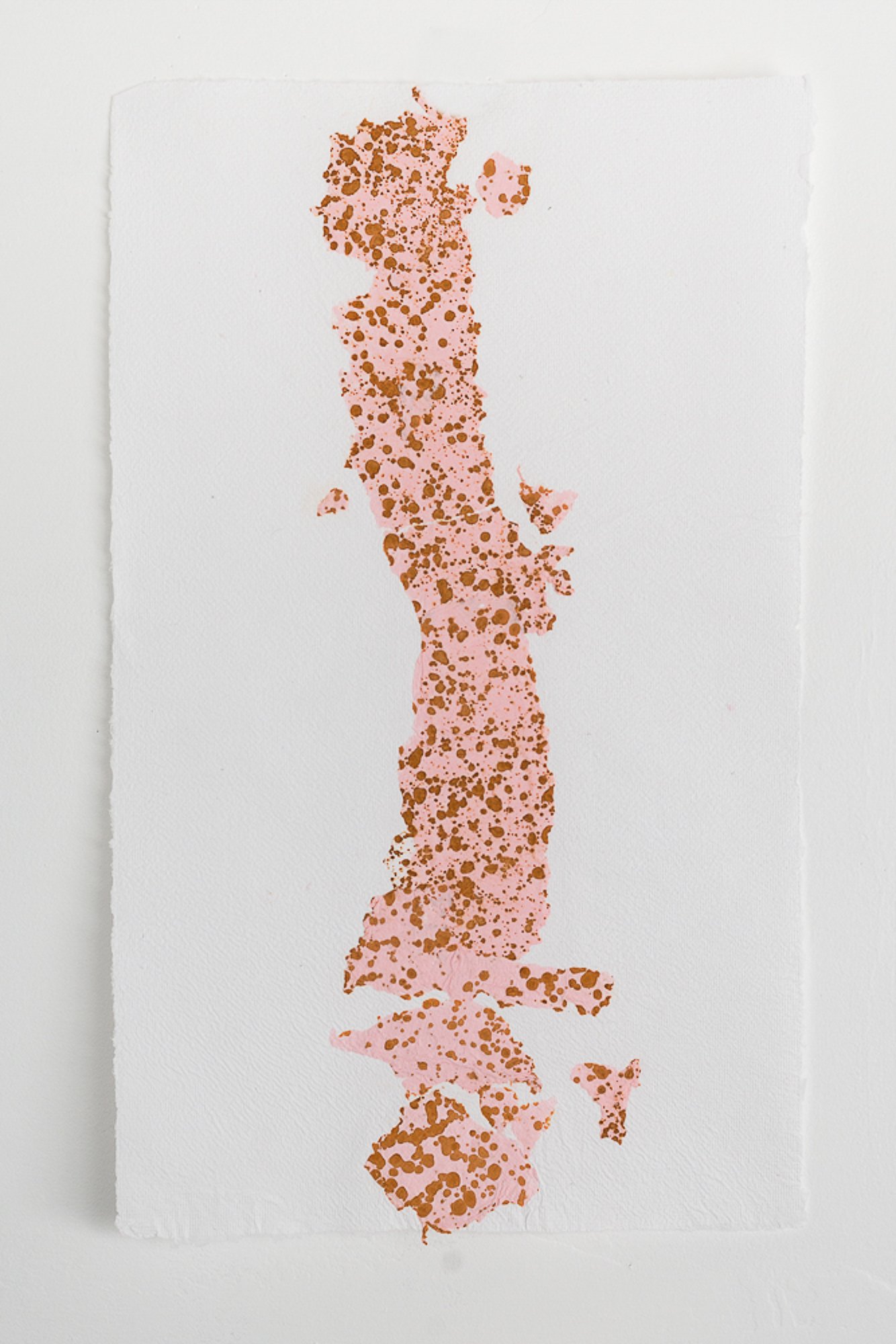Tahir Carl Karmali, PAPER:landscape, 2017. Handmade paper pulped from photocopied government-issued identification documents and commercial paper; with aluminum mesh, photocopy collage, rust transfer, and other mixed media collage, dimensions variable. Image courtesy of the artist.
An Immigrant’s Alphabet
by Vesna Jaksic Lowe
F1 Student Visa. It’s your ticket to the United States, after winning a tennis scholarship. America loves you now—it’s happy to use your athletic skills to promote its universities, tap your talents to collect trophies, slap images of your muscular body on the university’s colorful trifold brochures to recruit other athletes. You don’t think much about it at the time—you are young and hungry for competition and love getting free shoes and T-shirts. Your orientation guide is from Brazil, your doubles partner from Romania, your best friend from Spain. You believe America must love people from other countries.
OPT (Optional Practical Training) Visa. After graduating, it gives you a year to work in the land of the brave and free—if you know when and how to apply, if you have the time and resources to wait in line to get fingerprinted in a poorly marked office building nowhere near subway stops, if you get a job in your academic subject area fast enough, but not too fast, not before your documents arrive, because nothing scares an employer away faster than a “foreign alien” without a work permit.
Alien—you think about how some bureaucrats decided “immigrant” was not good enough, not othered enough. They had to leave the borders of this planet to come up with terminology to describe your foreign body. They used the power of language to label you as an extraterrestrial, to let you know you are an invader.
H1B Specialty Occupation Visa. You are among the lucky ones approved for this work visa, so you get to stay in the United States and keep your job as a daily newspaper reporter. It’s unclear what H1B stands for—maybe by the time they reached the eighth letter of the alphabet, they ran out of explanations for a system that classifies people as abstractions within the country’s immigration laws. Sure, there are definitions—there always are—like “specialty occupation” and “exceptional merit,” but like most things in America, it’s really about how good are your lawyers, how deep are your pockets, how light is your skin, how much privilege do you have that allows you to navigate the system and beat the bureaucracy.
F1 Student Visa, Part II. Back on the student visa, but for graduate school. You reported enough stories on local politics and immigration to realize that while there may be two sides to every story, only one is right. So you apply to grad school to study international relations and human rights, to advocate, to be on the right side.
You are still an immigrant so you are not eligible for federal aid or student loans or most scholarships, but it’s possible to get this visa if you jump through the usual hoops. You are just looking to get a degree like everyone else, but you are still the foreign alien, the threat. The Department of Homeland Security is in charge of processing your visa because your otherness poses a security risk to America. But if you score this piece of paper, it gives the university another country to decorate the diversity section of their website with, another flag to wave when they brag about their global student body. By now, you are used to being a statistic, a fact for politicians to cite when they argue about whether you are good or bad for the economy.
Tahir Carl Karmali, Untitled (PAPERwork), 2019. Handmade paper pulped from photocopied government-issued identification documents and commercial paper; with aluminum mesh, photocopy collage, rust transfer, and other mixed media collage, 11" x13". Image courtesy of the artist.
Permanent Resident (Green Card). You have been living here for more than a decade. You paid all the dues and fees and lawyers, mailed in all the forms, met all the deadlines, smiled at all the border agents, left your fingerprints in so many offices you are surprised the tips of your hands are not permanently stained in black ink. You got pricked and poked for medical tests to make sure you are not bringing diseases, went through an FBI check to make sure you are not bringing crime, signed statements confirming you didn’t belong to a communist party.
You fell in love with an American, got married at City Hall, brought originals and copies of your marriage certificate, birth certificate, folders bursting with passports and an alphabet soup of visas—F1, OPT, H1B, then F1 again, then OPT again. You brought pictures of you and your spouse as proof of your relationship: dancing at a friend’s wedding, taking a selfie during a summer trip to Portugal, clinking red wine glasses at a birthday party in Brooklyn. It’s evidence that you deserve to stay here, in a country where you will never fit in. But in a system that demonizes Black and brown bodies, your most valuable asset is not with your manila folders—it’s your manila skin, your green eyes, the orange freckle constellation dotting your arms.
The afternoon you sat in a downtown Manhattan office building waiting for your green card interview, you had all your documents in order, knew your application would be approved. Your interview was shorter than the wait for it. On your way out, you looked around the room and wondered if the officer who handled your case would treat the people of color surrounding you with the same amount of trust and humanity.
At the airport, you still go to the non-citizen line, which is always longer, and the uniforms controlling it yell louder. The faces forming the line are more worried, the mothers’ grips on their children’s hands tighter. You think about your own daughter, in a different line for bodies born on U.S. soil. She won’t have to learn an immigrant’s alphabet, the language cobbled together by bureaucracy in a country founded by immigrants but not looking for new ones. You will try your best to teach her about her roots. You tell her to ask her teachers to roll the “R” in her name. And you are thrilled when she savors eating octopus tentacles like you did as a kid, the sauce staining her chubby cheeks. You want her to take pride in her background, and to not be used as a ploy. To see the joy and beauty in her foreign ties, even when her government doesn’t.
The accents are thicker in your airport line, and so are the folders, and so is the air, filled with anxiety. Surrounded by other aliens and accents, you clutch your folder, your alphabetized life crinkling inside.
Published February 27th, 2022
Vesna Jaksic Lowe is a writer and communications specialist for nonprofits in the human rights and social justice space. Her bylines include The New York Times, the Washington Post, and Catapult. In 2021, she participated in the Tin House Summer Workshop and attended Martha's Vineyard Institute of Creative Writing's conference as a parent-fellow. An immigrant from the former Yugoslavia, she runs a monthly newsletter on immigrant writing, Immigrant Strong. Find her on twitter, @vesnajaksic.
Tahir Carl Karmali is an artist and designer born and raised in Nairobi, Kenya based in Brooklyn, NY. He is primarily an investigator of materials and their underlying source – as currency, as markers of cultural identity, or as exploitable artifact. Karmali invested in transforming these materials into varying formats (sculptural installations, prints, textile works) that are deceptively beautiful or attractive, as an art form, allowing the viewer to savor them as primary material before a layer of trauma (of migration, of displacement) reveals itself slowly. Karmali's work is based not only on his own physical experience of moving between borders, and globally diverse cultures, but also on how certain elemental materials move through these same routes and are thus transformed per their use value in each space, including within the art world.


